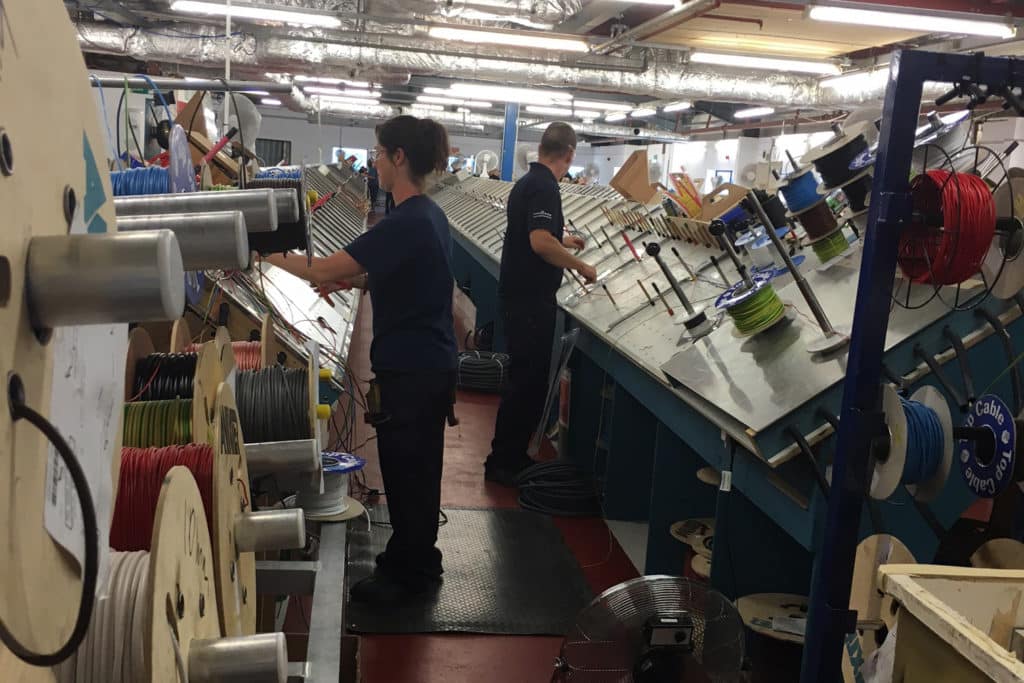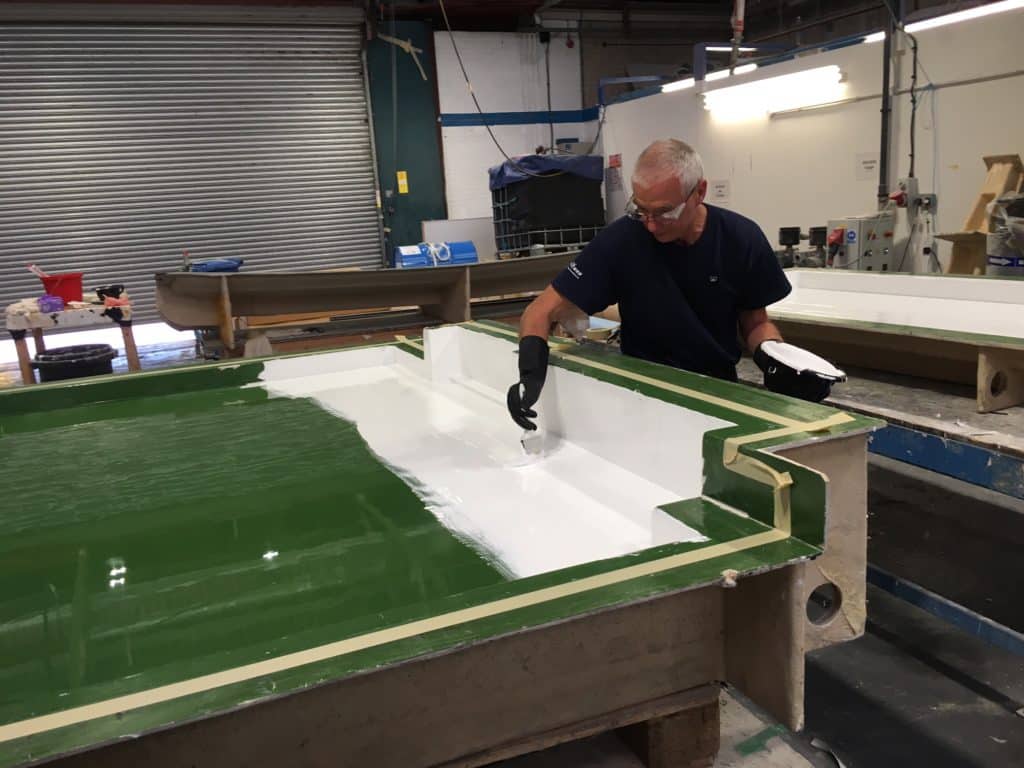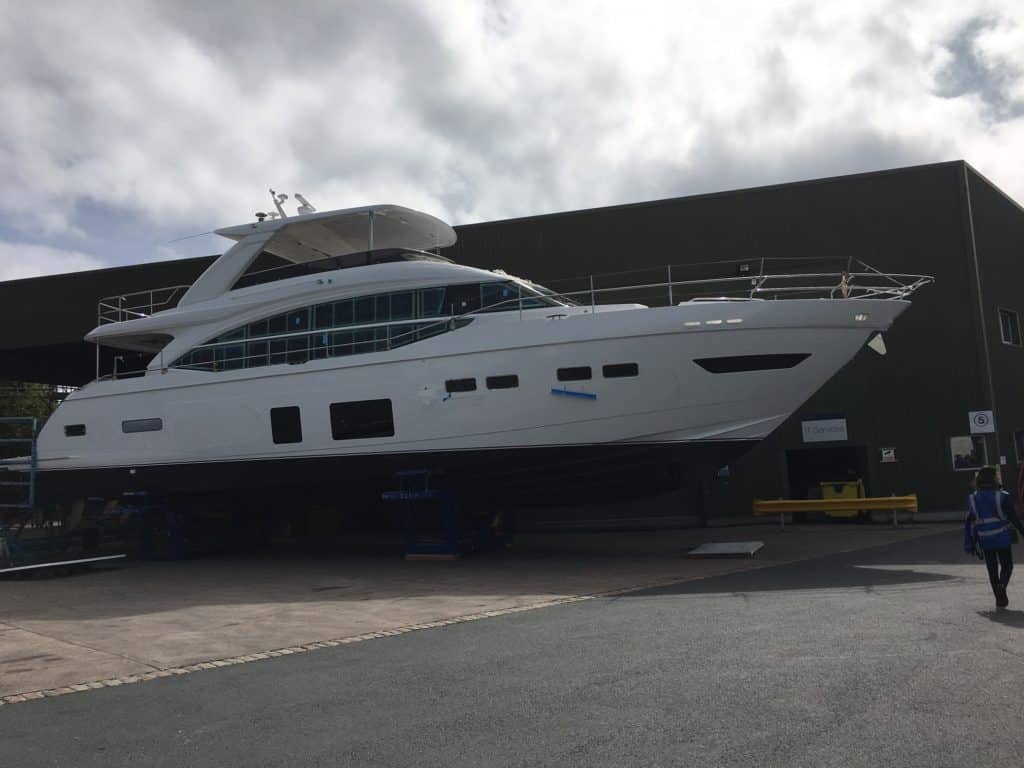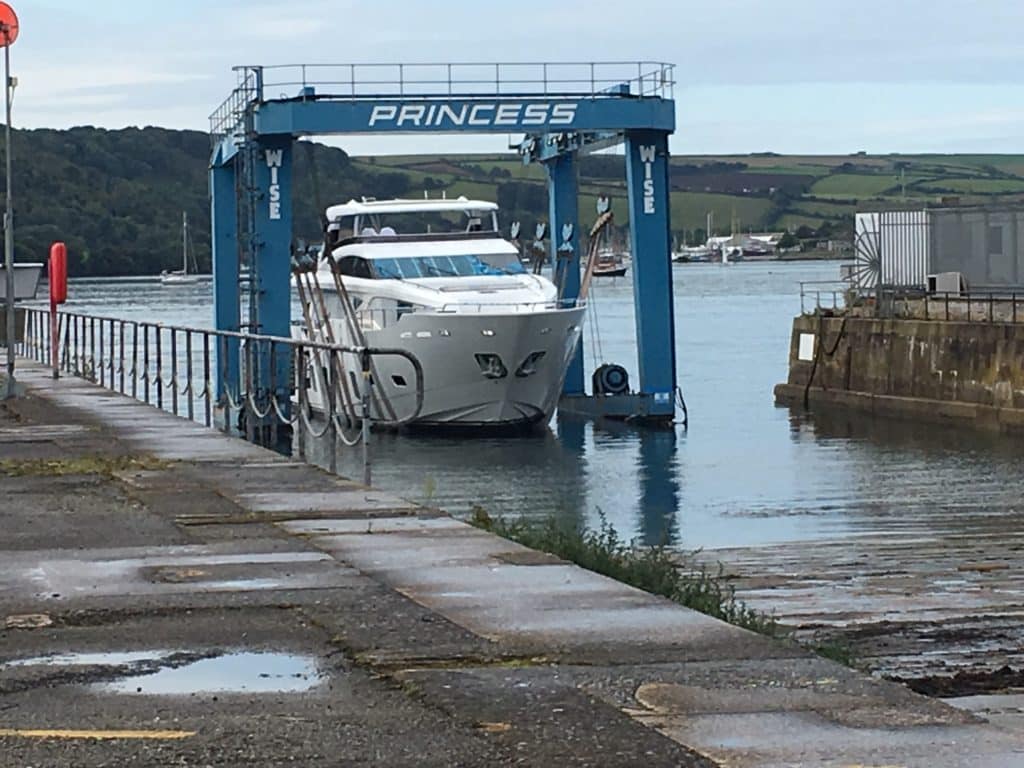Producing more than 17,000 vessels over 50-plus years is no easy task, but Princess Yachts has turned the science of boatbuilding into an artfully choreographed dance.
Whether it’s the company’s craftspeople looming 1,780 miles of wire (about the distance from Miami to Maine) per year or the lamination team infusing the builder’s 40-meter hull (a 7-hour process), everything at this yard is done with efficiency and a stringent attention to detail.
The Princess 68 illustrated the point during a late-afternoon sojourn on England’s Plymouth Sound. The hum of the yacht’s 1,200 hp MAN diesels was barely noticeable in the salon as our captain pushed the throttles to the pins and took the 68 up to 32 knots. She turned as if on rails, and there was nary a creek or groan while the yacht carved S-turns like a slalom skier.
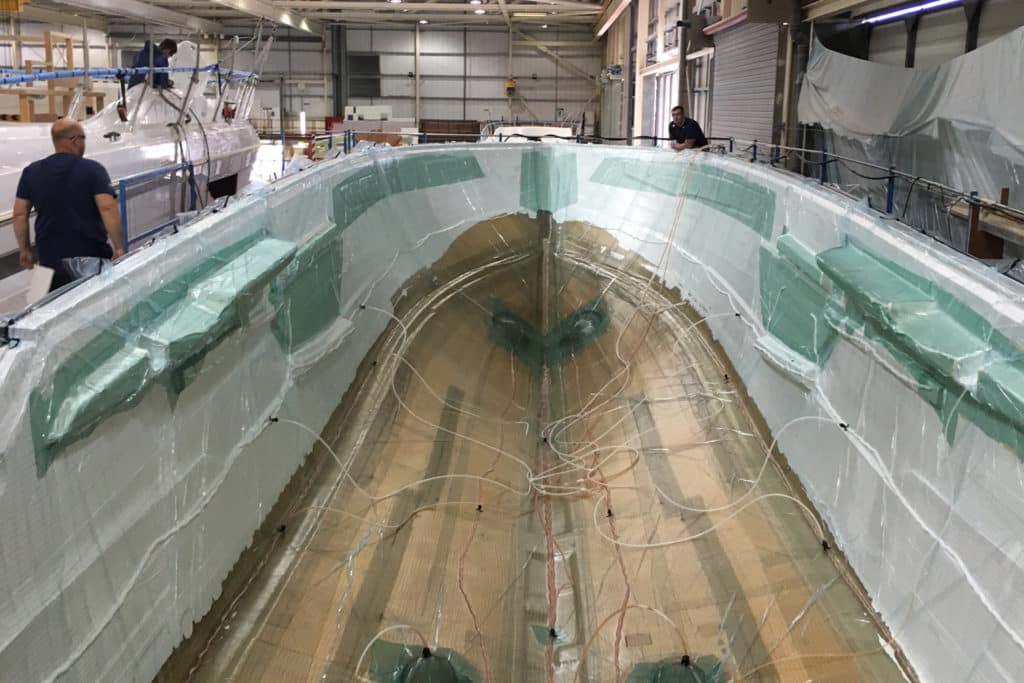
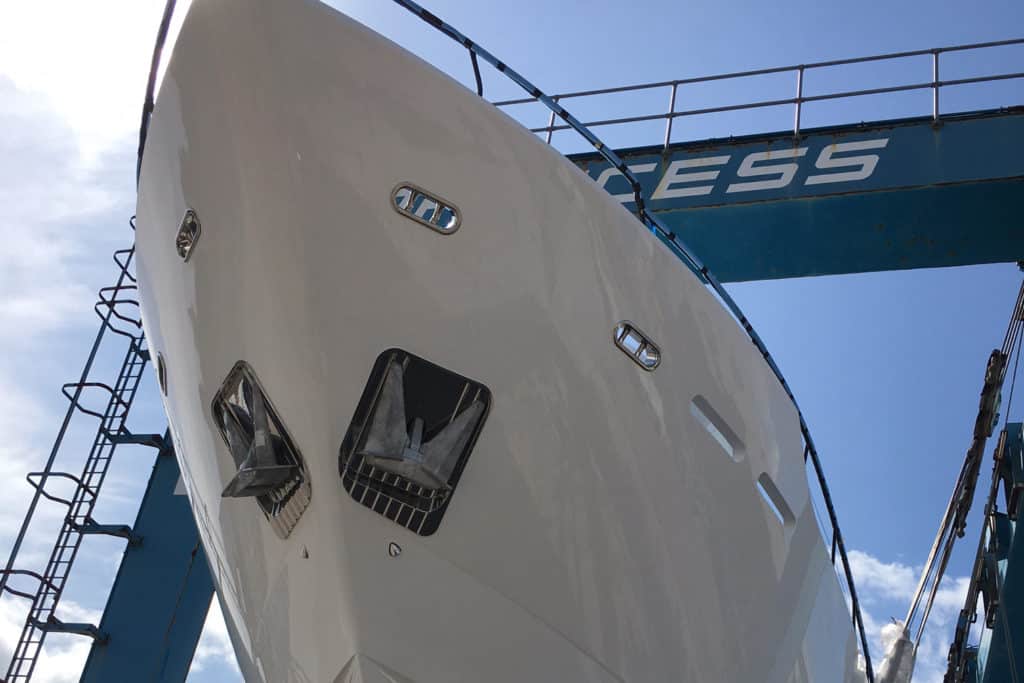
The interior volumes of the yacht were optimized, thanks, in part, to the builder’s dedication to do full-size mock-ups every new model’s interior so the Princess’ teams can see how the CAD concepts work in the real-world. As I looked around the 68’s aft galley setup with pass-through and the U-shaped settee to port for 6 to 8 guests, the benefits of the planning were evident.
I also got to see one of the builder’s future models in mock-up and while I can’t say exactly what I saw yet, the benefits of doing the full-scale resulted in an aft-deck layout I haven’t seen before. (Sorry about the tease, but stay tuned.)
About 80 percent of all Princess Yachts’ vessels are built in-house, excluding items like engines, air conditioning and the like, giving the builder a high level of quality control. It’s evident in details like the Princess logo etched into a cleat here and those aforementioned seamless wire looms, labeled for easy identification there.
The precision is due, in part, to the company’s apprenticeship program where employees get trained on-site, both in a workshop environment and on the actual production floor.
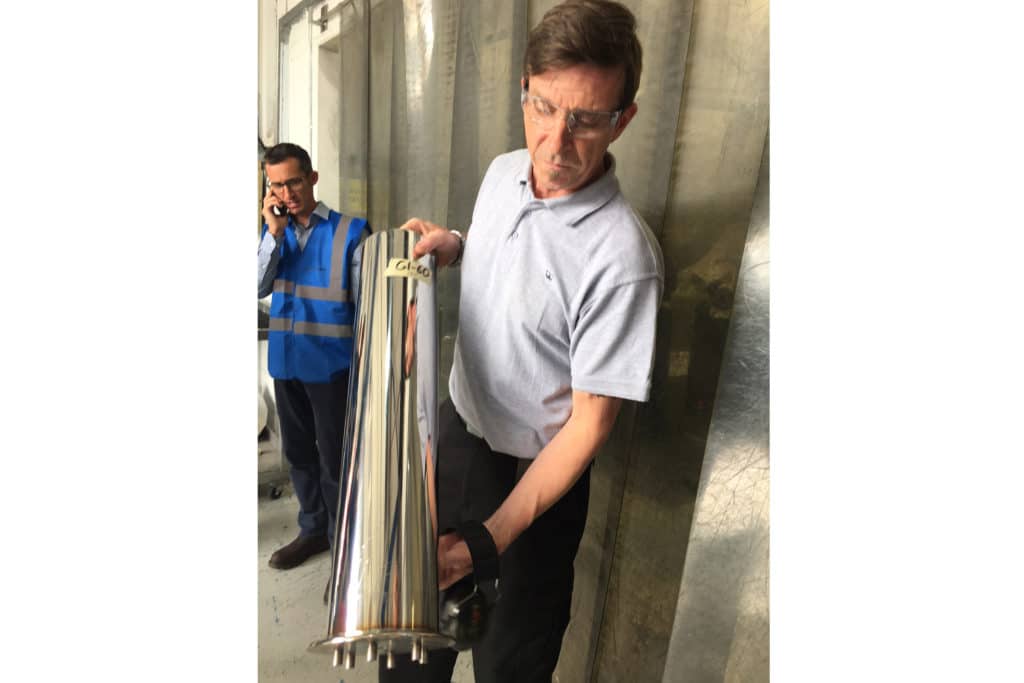
In addition to the well-trained workforce, about 2,500 employees producing almost 250-plus yachts from 39 feet to 131 feet per year and growing, the builder uses materials, technology and testing to ensure its products are the best they can be.
In addition to resin-infusion infused hulls and other large parts (some smaller parts are still hand-laid), Princess Yachts uses carbon fiber in areas where strength is needed, but with less weight, to help optimize a yacht’s performance. A new CNC router creates plugs that will make molds and eventually become new Princess models.
All of the builder’s yachts are also constructed to a precise schedule and Princess can tell an owner exactly what should (and is) happening on a particular day in the cycle. Every yacht’s job book lists number of days into build; the approximate hours required for the build and if there were any job delays, keeping everyone accountable for quality and efficiency, but not sacrificing one for the other, either.
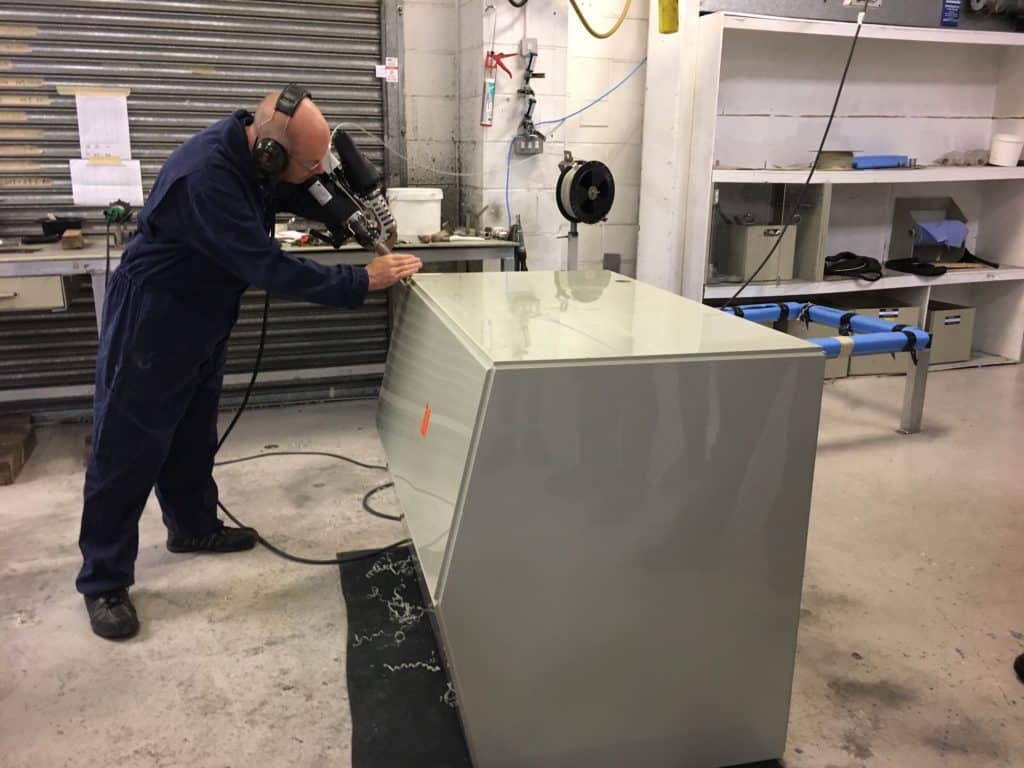
But it didn’t look like there were many delays as all of the yards I saw were buzzing like beehives. In 18 years of visiting yacht builders, this was one of the most active yards I’ve seen, whether I was at the Princess’ dedicated smaller yard (39- to 48-foot models) or stopping by its M-class facility (30-, 35- and 40-meter craft).
The day I left the builder’s M-class facility, Princess was giving its new 30-meter her first dip in the salt befire heading to the Cannes Yachting Festival. The builder’s crew was smiling and the sun, which had been hiding earlier that morning, came out to greet the yacht as she was lowered by the travelift.
I looked over and noticed a covered slipway dated 1703. It’s still in use. In fact, there was a boat in it. To my left, was the rich history of British boatbuilding and 200 yards to my right the newly minted 30-meter showed the industry’s present state. If Princess keeps to the path I saw during my visit, the boatbuilding future here should be bright.
